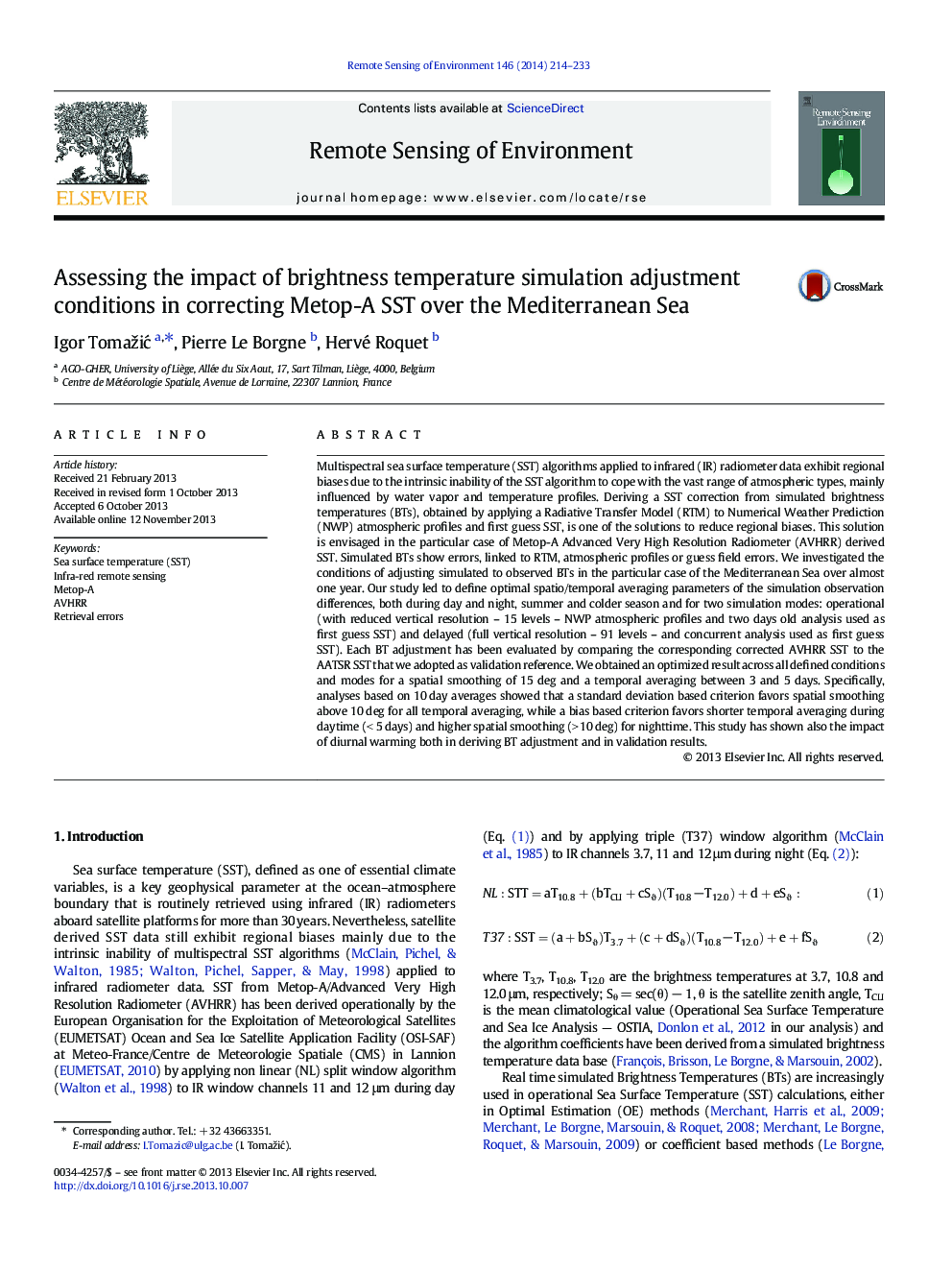| کد مقاله | کد نشریه | سال انتشار | مقاله انگلیسی | نسخه تمام متن |
|---|---|---|---|---|
| 6346707 | 1621254 | 2014 | 20 صفحه PDF | دانلود رایگان |
عنوان انگلیسی مقاله ISI
Assessing the impact of brightness temperature simulation adjustment conditions in correcting Metop-A SST over the Mediterranean Sea
دانلود مقاله + سفارش ترجمه
دانلود مقاله ISI انگلیسی
رایگان برای ایرانیان
موضوعات مرتبط
مهندسی و علوم پایه
علوم زمین و سیارات
کامپیوتر در علوم زمین
پیش نمایش صفحه اول مقاله

چکیده انگلیسی
Multispectral sea surface temperature (SST) algorithms applied to infrared (IR) radiometer data exhibit regional biases due to the intrinsic inability of the SST algorithm to cope with the vast range of atmospheric types, mainly influenced by water vapor and temperature profiles. Deriving a SST correction from simulated brightness temperatures (BTs), obtained by applying a Radiative Transfer Model (RTM) to Numerical Weather Prediction (NWP) atmospheric profiles and first guess SST, is one of the solutions to reduce regional biases. This solution is envisaged in the particular case of Metop-A Advanced Very High Resolution Radiometer (AVHRR) derived SST. Simulated BTs show errors, linked to RTM, atmospheric profiles or guess field errors. We investigated the conditions of adjusting simulated to observed BTs in the particular case of the Mediterranean Sea over almost one year. Our study led to define optimal spatio/temporal averaging parameters of the simulation observation differences, both during day and night, summer and colder season and for two simulation modes: operational (with reduced vertical resolution - 15 levels - NWP atmospheric profiles and two days old analysis used as first guess SST) and delayed (full vertical resolution - 91 levels - and concurrent analysis used as first guess SST). Each BT adjustment has been evaluated by comparing the corresponding corrected AVHRR SST to the AATSR SST that we adopted as validation reference. We obtained an optimized result across all defined conditions and modes for a spatial smoothing of 15Â deg and a temporal averaging between 3 and 5Â days. Specifically, analyses based on 10Â day averages showed that a standard deviation based criterion favors spatial smoothing above 10Â deg for all temporal averaging, while a bias based criterion favors shorter temporal averaging during daytime (< 5Â days) and higher spatial smoothing (>Â 10Â deg) for nighttime. This study has shown also the impact of diurnal warming both in deriving BT adjustment and in validation results.
ناشر
Database: Elsevier - ScienceDirect (ساینس دایرکت)
Journal: Remote Sensing of Environment - Volume 146, 25 April 2014, Pages 214-233
Journal: Remote Sensing of Environment - Volume 146, 25 April 2014, Pages 214-233
نویسندگان
Igor TomažiÄ, Pierre Le Borgne, Hervé Roquet,